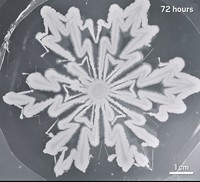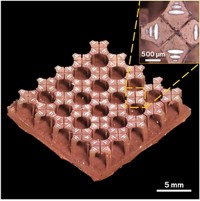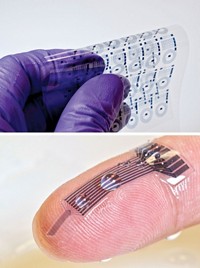Advertisement
Grab your lab coat. Let's get started
Welcome!
Welcome!
Create an account below to get 6 C&EN articles per month, receive newsletters and more - all free.
It seems this is your first time logging in online. Please enter the following information to continue.
As an ACS member you automatically get access to this site. All we need is few more details to create your reading experience.
Not you? Sign in with a different account.
Not you? Sign in with a different account.
ERROR 1
ERROR 1
ERROR 2
ERROR 2
ERROR 2
ERROR 2
ERROR 2
Password and Confirm password must match.
If you have an ACS member number, please enter it here so we can link this account to your membership. (optional)
ERROR 2
ACS values your privacy. By submitting your information, you are gaining access to C&EN and subscribing to our weekly newsletter. We use the information you provide to make your reading experience better, and we will never sell your data to third party members.
Materials
Microfluidic Chip Fabricates Intricate Polymer Designs
Materials: Researchers strengthened a polymer chip to quickly produce polymer sheets with elaborate patterns in two- and three-dimensions
by Erika Gebel Berg
July 10, 2014

Researchers developed a high-throughput, low-cost microfluidic method for synthesizing polymer sheets with intricate features for use as membranes or tissue scaffolds (Langmuir 2014, DOI: 10.1021/la501723n).
Microfluidic chips made from polydimethylsiloxane (PDMS) can act as casts to rapidly and inexpensively produce uniform particles for use in drug delivery or other applications. However, PDMS is soft, says Dae Kun Hwang of Ryerson University, in Toronto, and can sag if the channel in the chip is too wide. For this reason, the channels are designed to be, at most, 100 μm wide. So scientists haven’t been able to produce some larger structures, such as polymer sheets, with PDMS microfluidics.
To allow for wider microfluidic channels, Hwang’s team embedded glass slides in PDMS chips to prevent sagging. Using a strengthened chip with a wider channel, they first synthesized a membrane by placing an ultraviolet light underneath the chip, overlaid with a photomask shading the spots destined to become the membrane’s pores. The researchers streamed a solution of poly(ethylene glycol)diacrylate and a photoactivated cross-linking agent through the 8-mm-wide and 30-μm-tall channel. Then, they stopped the flow and flashed the light, triggering the material to stitch itself together to form a solid everywhere but in the pores of the membrane. Within milliseconds, the membrane formed and was quickly flushed out of the device by more solution, making room for the synthesis of the next membrane.
The researchers also employed more elaborate photomasks to build, for example, a maze reminiscent of a Pac-Man game, a three-dimensional scaffold for growing tissue, and a radio frequency identification (RFID) tag. The RFIDs don’t work that well now, Hwang says, because the polymer they’re using to cast the antenna isn’t particularly conductive. But they’re tweaking the recipe, he says.





Join the conversation
Contact the reporter
Submit a Letter to the Editor for publication
Engage with us on Twitter